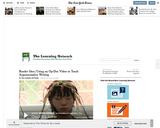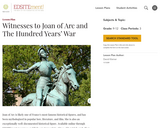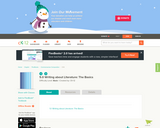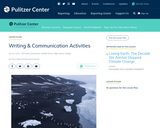
Tips and tools to help students write argumentative writing.
- Subject:
- English Language Arts
- Material Type:
- Reading
- Provider:
- University of Chapel Hill North Carolina Writing Center
- Author:
- UNC Writing Center
- Date Added:
- 02/26/2019

Tips and tools to help students write argumentative writing.

This resource provides a lesson designed to guide students through a reading of the short story "Lamb to the Slaughter". Students will read and analyze the text. Afterwards, students will reflect through response to guided questions and write an essay.

In this lesson, students watch an Op-Doc and note how the filmmakers build their argument.

In this lesson, students will analyze the rhetorical strategies Malcolm X used in his speeches, such as tone, emotional appeal, and descriptive language. They will also consider the strategies used by African American leaders during the Civil Rights Movement and the social implications of these strategies, contrasting the leadership and ideology of Martin Luther King, Jr. and Malcolm X in the Civil Rights Movement and evaluate their legacies. They will identify personal values and use them to determine appropriate behaviors for protecting their individual rights.

In this lesson, students will generate questions about what has happened to the environment and the people of Fukushima as a result of the tsunami and flooding of the nuclear power plant. Students will use primary source video testimony and interviews to gather information from many perspectives, share information orally, and take notes on ideas expressed by others. Then, students will integrate information on Fukushima into an opinion paper.

Students engage in a Structure Academic Controversy (SAC) about the "War Powers Act", "The War Powers Resolution: After Thirty-Six Years", and "The Constitutional Limitations on the President's Powers" to answer the essential question, "Did the creation of the War Powers Act conflict with Congress's Constitutional power to declare war?"

This inquiry is focused on the compelling question "Was American expansion abroad justified?" The inquiry calls into question motives and outcomes of imperialism by considering both the positive and negative results of United States expansion abroad, with specific focus on the United States' involvement in the Spanish-American War.

This resource contains a lesson plan for assisting students with a culminating activity during a reading of Romeo and Juliet. Students are tasked with reading a critical essay independently. Afterwards, students are required to draw evidence from the essay, other readings, discussions and any other applicable materials used for a study of the play. The lesson may be used as a guide and may be manipulated to include resources that were aligned by the instructor. The resource contains applicable handouts to include: worksheets and graphic organizers.

Students explore personal feelings about civil liberties, research the history of sedition-related legislation in the United States and create an informed position paper on the concept of sedition.

Students trace Joan of Arc's history from childhood, through her death, and on to her nullification trial. Reading the words of laborers, pages, knights and clerics, students gain authentic historical context for a charismatic and complicated figure and better understand Joan's place in the history of the Hundred Years' War.

This chapter introduces students to the basics of reading literature. It introduces students to subjective and objective reading, and goes over the basic ideas behind reading for plot, character, setting, and theme. Learning objectives are: Ask subjective and objective questions about what they have read; Learn the meanings of “tone,†“diction,†and “syntax.â€; Identify the major elements of a plot; Identify character, setting, and theme; Differentiate between internal and external conflict.

In this lesson plan, students will explore the difference between an emotional response and a logical appeal, utilizing three different handouts in order to create their own organized response to a piece of nonfiction.

Guide your students in creative, expository, and persuasive writing, class debates, and science communications exercises designed for any subject area.

This lesson encourages students to get involved with the environmental issues facing the world today. Students choose an audience and an environmental issue, then craft a persuasive letter urging someone to take action.